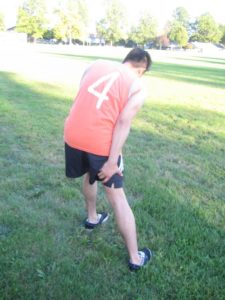Piriformis syndrome is characterized by buttock pain radiating down the leg. It is due to the impingement of the sciatic nerve by the tight piriformis muscle deep within the buttocks.
What are the indications?
- Pain or tenderness in the buttock muscle that radiates to the back of the leg into the hamstring muscles and even the calf muscles
- Diminished range of movement of the hip joint particularly into internal hip rotation
Possible causes

Overuse is usually the reason why the piriformis muscle goes into spasm. This results to the build-up of pressure on the sciatic nerve. It is important to note that the piriformis muscle is a small-sized muscle deep within the buttocks which is responsible for rotating the leg exteriorly.
The sciatic nerve is located near to this muscle and it passes directly through the muscle fibers in some individuals. In case the piriformis muscle tightens, it can compress the sciatic nerve and produce pain that radiates down the leg.
Management of piriformis syndrome
The treatment for piriformis syndrome involves 2 stages. The first stage is aimed on reducing the pain by allowing the muscle to relax using ice or heat, massage, electrotherapy and stretching. Once the pain allows, strengthening of the muscle is the objective to prevent future injury.
Ways to reduce the pain
- For an acute injury, apply an ice pack to minimize the muscle spasm.
- As for chronic conditions, heat therapy is a better option to relax the muscles. Heat is available in various forms such as a hot bath or hot water bottle that is applied for around 20 minutes at 3 times throughout the day to help alleviate the muscle spasm and promote the flow of blood. In addition, the application of a heat pack before exercise can help increase the effectiveness of the exercise.
- Anti-inflammatory medications are prescribed by the doctor to minimize the pain and inflammation.
- Sports massage or electrotherapy such as ultrasound can be used to relax the muscle.
- Adequate rest from any activities that worsen the symptoms is vital especially weight bearing activities and running.
Gentle stretching exercises for the piriformis must be done but only if the pain allows. This can also help alleviate the pressure from the nerve which triggers the pain.
The rehabilitation of piriformis syndrome is aimed on releasing muscle tension and fixing any muscular imbalances or biomechanical issues that might contribute to the condition.
